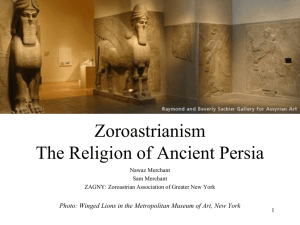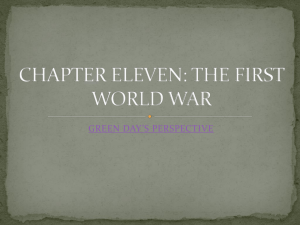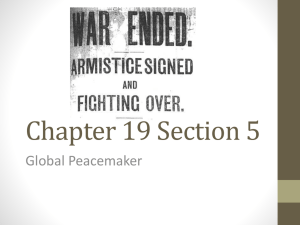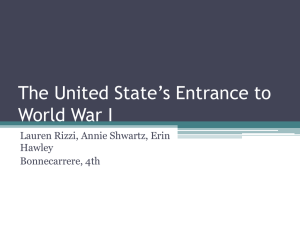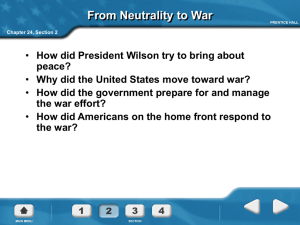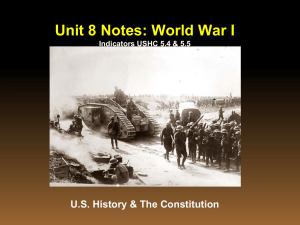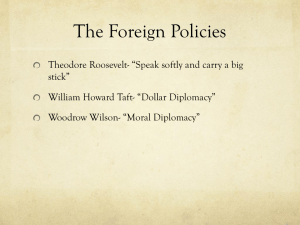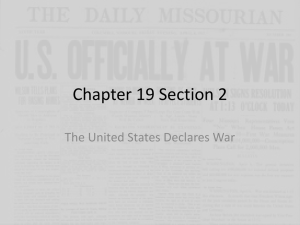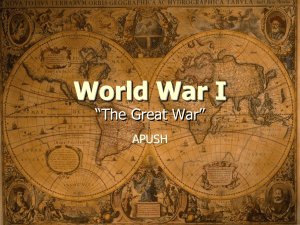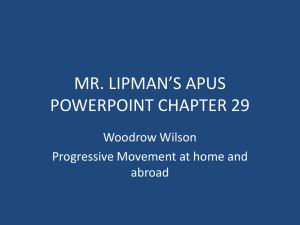parsi identity . . . . . . . .lost? - Parsis, Iranis, Zarathushtis
advertisement
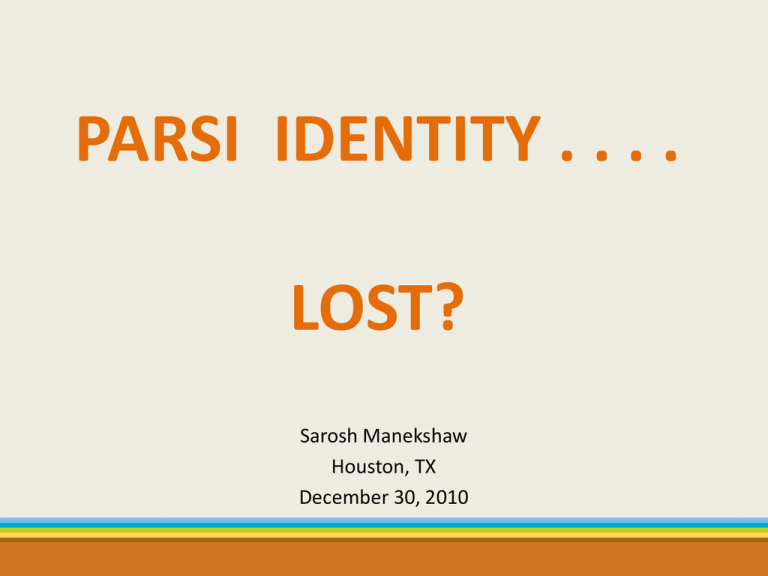
PARSI IDENTITY . . . . LOST? Sarosh Manekshaw Houston, TX December 30, 2010 OBJECTIVE • To trace the development of and changes to Parsi Identity over time • To present some major events that impacted Parsi Identity, and to describe how they changed our Identity • To forecast the future of Parsi Identity based on the past record of change 2 ACKNOWLEDGEMENT • Palsetia, Jesse S.: The Parsis of India, Delhi, 2008 • Hinnells, John R.; Zoroastrian and Parsi Studies, Aldershot, 2000 • Boyce, Mary: Zoroastrians, London, 1979 • Williams, Alan: The Zoroastrian Myth of Migration, Leiden, 2009 • Randeria, Jer: The Parsi Mind, New Delhi, 1993 • Luhrmann, Tanya M.: The Good Parsi, London, 1996 • Plus plagiarism from many more!! 3 WHAT IS IDENTITY? • Our identity is the set of behavioral or personality characteristics by which we are recognizable as a member of a group • Our identity is what defines us – It differentiates us from the other – It binds us to those who are similar 4 WHAT IS IDENTITY? • Our identity has many attributes: – Nationality -- Language – Religion -- Ethnicity – Gender -- Clan or tribe (family) – Occupation -- Social status – Politics -- Culture • We use different characteristics in different situations, and identify ourselves with different groups depending on the situation 5 WHAT IS IDENTITY? • • • • When representing our country – nationality When visiting a place of worship – religion When working – occupation When communicating – language 6 GROUP IDENTITY • Group identity begins developing in early childhood, where each individual’s core personal identity is intertwined with that of the larger group • Without this early link to the group, personal identity does not develop • Groups represent safety, strength, harmony and familiarity • Groups fulfill the need for bonding, identity, cohesiveness, integrity, recognition and security 7 GROUP IDENTITY • Social scientists see identity as a basic human need, which is fulfilled through belonging to a group • As Parsis, we belong to a distinctive group 8 PARSI IDENTITY What uniquely identifies us as Parsis? 1. We are Mazdayasni Zarathushtis – Religion 2. Originally from Iran – Ethnicity 3. Blended our original Iranian traditions with those of Hindus during our domicile in India – Culture (Tradition) We will use these three primary characteristics to develop the Parsi narrative 9 PARSI IDENTITY • For Zoroastrians, the link between religion and ethnicity goes back to Achaemenian times • Darius refers to himself, in ethnic terms, as: arya arya ciça 'Aryan, of Aryan stock‘ • And further states that: Uramasda nap harriyanum 'Ahuramazda is the God of the Aryans' • Thus, from Achaemenian times on, Zoroastrianism has been considered an ethnic religion 10 FOUNDATION OF THE PARSI IDENTITY QEȘȘE-YE SANJĀN • In 652 C.E. the Sassanian empire was defeated by the Arabs • Islam was forced on the Iranian people – By the sword – Genocide – Financially – By the Jizya Tax – Inculcating Islam in the children – Brainwashing • Religious persecution and discrimination made life for Zarathushtis unbearable 12 QEȘȘE-YE SANJĀN • 651 C.E. – Group of staunch Zarathushtis left Khorasan for Kuhestān • 751 C.E. – Left Kuhestān for Hormuz • 766 C.E. – Left Hormuz for Diu • 785 C.E. – Left Diu for Sanjān (Gujarat) – Storm at sea and vowed to consecrate an Atash Behram if granted safe passage • Sought asylum from the local ruler – Jadi Rana 13 CONDITIONS FOR ASYLUM 1. Explain your religion and customs 2. Renounce your native language and take up the local language 3. Women shall wear the local dress 4. Lay down your swords and arms 5. Marriages shall take place at night 14 ASYLUM GRANTED • Jadi Rana granted asylum and gave them a parcel of land • Named the land Sanjān after the homeland from where they came • 790 C.E. – Consecrated an Atash Behram fire in Sanjān, in fulfillment of their vow • Came to be known as “Parsis” 15 ADAPTING IN INDIA • Parsis lived harmoniously with the local population • Parsis were free to practice their religion with no fear of conversion to the local religion • In turn, Parsis did not proselytize, and were not perceived as a threat by the Hindus • Parsi ethnicity was maintained because they could not inter-marry with Hindus 16 ADAPTING IN INDIA • Mainly agriculturalist • Spread out over Gujarat • Gradually took on some local Hindu customs 17 PRESERVING THE IDENTITY • Parsis remained strongly orthodox • For Parsis, religious identity as Zarthushtis and ethnic identity as Parsis were synonymous • Engaged in endogamous (within the tribe) marriage to preserve the Parsi identity • Hindu caste structure also prevented inter-marriage between the communities • Remained a non-proselytizing community • Strong emphasis on ritual purity, but simplified some ceremonies and adapted others to Indian conditions 18 QUAE MUTATIO? (WHAT CHANGED?) • RELIGION – Unchanged – strongly orthodox • ETHNICITY – Unchanged – no inter-marriage • CULTURE & TRADITION – Major change. Had to adapt to and take on many of the local Hindu customs This was the basis of our Parsi Identity 19 THE PERSIAN RIVAYATS – 15th to 18th CENTURIES and THE CALENDAR CONTROVERSY PERSIAN RIVAYATS • Parsis still looked up to the Iran priests on religious matters • Changa Asa, a leading Parsi from Navsari, sponsored an envoy to travel to Iran to consult with Iranian priests on religious matters • In 1478 Hoshang Nariman returned with letters and religious manuscripts • No differences in doctrine – mainly clarified procedures for rituals • This correspondence between the Parsis and the Iranian Zarathushtis came to be known as the “Persian Rivayats” and continued for several hundred years 21 CALENDAR CONTROVERSY • During the course of correspondence, it became known that there was a one-month difference between the Parsi and Iranian calendars • Sometime in the period 1120 to 1130, the Parsis in India intercalated (added) an additional month, resulting in the Parsi calendar being one month behind the Iranian one • The why or the when of this intercalation is not known 22 CALENDAR CONTROVERSY • The Parsis had religiously organized themselves into 5 panths (geographical areas), where priestly families had authority – – – – – Sanjanas Bhagarias Godavaras Bharuchas Khambattas • That the intercalation had taken place indicates the unity of the Parsi priests • Priests were the leaders of the community 23 CALENDAR CONTROVERSY • In 1746, several priests in Sanjān decided to adopt the Iranian calendar • Called themselves Kadmis or “ancient” ones • Most Parsis continued with the traditional system and were known as the Shenshais • The issue became bitter to the point of violence • This was the first major schism within the Parsi community 24 CALENDAR CONTROVERSY • In 1783, a wealthy philanthropist, Dady Seth, had a Kadmi Atash Behram consecrated in Mumbai • This helped reduce the tension between the Kadmis and the Shenshais • Kadmis looked up to priests in Iran for guidance • Shenshais followed the Parsi priests • Major change between the two was the difference in calendar and Navroz • Doctrinally no changes, with minor changes in rituals and prayers 25 QUAE MUTATIO? • RELIGION – Schism between the Kadmis and Shenshais. – One month difference in Navroz. – Minor changes in rituals and prayers – Both communities remained orthodox • ETHNICITY – No change • CULTURE & TRADITIONS – No change Leaders and Community remained strongly driven to preserve Parsi Identity 26 PARSIS IN THE 16TH TO 18TH CENTURY & BRITISH EAST INDIA COMPANY AND THE IMPACT ON THE PARSI UNDER MOGUL RULE • Parsis, like other non-Muslims, also suffered persecution under Islamic rule in India • Emperor Akbar took an interest in the Zoroastrian religion – a period of religious tolerance • Dastur Meherji Rana went to Akbar’s Court • Akbar was impressed and removed the Jizya tax from the Parsis • However, the tax was re-imposed by Akbar’s successors • Continued unrest between Parsis and Muslims 28 BRITISH EAST INDIA COMPANY • Early 16th Century, Europeans established trading outposts in Surat and other Gujarat towns • Parsis entered their employment • Parsis gradually transformed from agriculturalists to traders, and taking on the role of Agents to the Europeans • Growth of Parsi involvement in trade and commerce • Establishment of the “Sethias,” the rich Parsi merchants • Deep sense of communal care and charity • Elders strictly supervised the morals of the community • Renegade Parsis were ostracized – made “out of caste” 29 SETTLEMENT IN MUMBAI • In 1662, the 7 islands of Mumbai ceded to British by Portuguese – as dowry to Charles II • Essentially a swampy, fishing village • Parsis rapidly migrated to Mumbai and greatly impacted the urbanization, growth and culture of the city • Made their fortunes in trade, finance and ship-building • Parsis highly regarded by the British • Period of collaboration between the two communities • Built Dakhma in 1670, and Vachha Modi Agiary in 1673 • These were essential for community building in Mumbai 30 SETTLEMENT IN MUMBAI • Priests were imported from Gujarat to Mumbai to serve the growing community • Power and control over community affairs shifted rapidly from the priests of Gujarat to the wealthy merchants in Mumbai • The elite played a leading role in influencing and directing community affairs • Strongly focused on maintaining their distinct religious identity and culture 31 PARSI CHARITY IN MUMBAI • The merchants contributed generously to Parsi charities • Spread to Parsis outside Mumbai, and even to non-Parsis • This charity was born of the Zarathushtrian spirit of betterment of humanity • Parsi charity came to characterize the essence of Parsi Identity 32 BOMBAY PARSI PUNCHAYET • Growth of the Parsi community in Mumbai required a base of governance to preserve communal morals and unity • The Sethias had formed the informal core of the community’s leadership. • They recognized the need to preserve social norms and build a senses of community • Formal governance was instituted in the form of the Bombay Parsi Punchayet (BPP) 33 BOMBAY PARSI PUNCHAYET • The BPP was first constituted in c. 1725, by 5 prominent, lay, Parsi merchants • Interested primarily in the social and civil needs of the community • The ability of the BPP to mete out punishment (in the form of ostracizing) led to the behdin-mobed dispute • Appeals, to the British, ruled in favor of the BPP and strengthened their position 34 BOMBAY PARSI PUNCHAYET • In 1787, the BPP was reconstituted under the authority of the Government giving it legal rights • Increased to 12 members – all still prominent Parsis • This institution was now key in shaping the Parsi identity • Gradually BPP took over the leadership role from Navsari, the center of priestly authority, and started controlling religious issues as well • Outlawed bigamy and child marriages. • In 1836 the BPP put “out of caste” 3 priests for performing the Navjote of illegitimate children 35 BOMBAY PARSI PUNCHAYET • The BPP was instrumental in setting community norms on social & marital issues, and they had the authority to mete out punishment by declaring the individual “out of caste” • This left the individual bereft of communal support • Laskari case, and other disciplinary actions, displayed the necessity of social control to maintain communal cohesiveness • 1818 to 1823, the BPP proscribed rituals deemed to be Hindu or Muslim (visiting holy places; those pertaining to wedding & funeral rituals; superstitious practices; etc.) • Issues of marriage, role of men and women, and religious observances, came to define the Parsi Identity. 36 DECLINE OF THE BPP • Starting about 1836, the BPP went into decline • Members did not attend meetings • Nepotism prevailed, and those taking over lacked an interest in communal affairs • Rulings were inconsistent, delayed, and unevenly enforced • Several prominent leaders resigned in frustration • Parsis felt the BPP had abdicated its responsibility to safeguard the community’s interests • The newly educated, reformist Parsis opposed the BPP and the community split 37 QUAE MUTATIO? • Religion – – Leadership over religious matters gradually shifted away from the priests in Gujarat to the Sethias in Mumbai – Doctrinally unchanged – Strictly controlled religious purity by proscribing nonZarathushtrian rituals and ceremonies • Ethnicity – Unchanged – strong opposition to conversion and proselytization 38 QUAE MUTATIO? • Culture & Traditional – – Shift from rural to urban – Interaction with Europeans – Very effective institution (BPP) was formed to dispense social justice, with the primary focus of preserving Parsi Identity and communal unity – Its rapid decline led to a split in the community 39 WESTERN INTERPRETATIONS OF ZOROASTRIANISM – 1840s to 1860s CHRISTIAN PROSELYTIZATION • In 1813 the East India Company was forced to permit missionaries to enter India • In 1829 the Rev. John Wilson, a Scottish missionary arrived in Mumbai • He was impressed by the Parsis’ outstanding character and progressiveness • Thus, the Parsis became a target community for Rev. Wilson’s evangelical efforts 41 REV. JOHN WILSON • He studied the then available (Antiquetil du Perron’s) translations of the Avesta and Bundahishn • Set about attacking Zoroastrianism by vilifying the doctrines of the religion • Published these attacks in a series of articles in the local newspaper • Several individuals responded to this attack and a debate raged in the community • They, unschooled in Western education, proved to be poor defenders of the faith • Their contradicting defense further added to the confusion 42 REV. JOHN WILSON Wilson’s attack was on the following grounds: 1. Zoroastrianism robbed God (Ahura Mazda) of his glory by admitting to the powers of an Evil Spirit 2. Because of the veneration of the Amesha Spentas and Yazatas, Zoroastrianism was polytheistic 3. Because of its veneration of fire, water and the earth, it was a form of nature worship 4. That the Avesta was not written by Zarathushtra 5. Zarathushtra was not a prophet, since there is no record that he performed miracles 43 REV. JOHN WILSON • The only coherent defense was by Dastur Edul Sanjana, of the Wadiaji Atash Behram, who strongly defended the orthodox position • He, too, was viciously attacked by John Wilson • This confrontation left the community in disarray, since they felt that even their priests were unable to satisfactorily defend the religion • Wilson’s attack had the desired effect of spreading confusion, and left several (especially the educated Parsis) distressed that they were unable to defend or explain their beliefs and doctrines to the British 44 REV. JOHN WILSON • Despite Wilson’s persistent attacks, he was only able to convert one Parsi • On May 1, 1839, Dhanjibhai Nauroji, a 16-year old, was baptized a Christian by Rev. Wilson • This conversion caused outrage, and unified the community in its opposition to proselytization • The case was challenged in court, but the British justices ruled in favor of Wilson • This incident raised the necessity to defend, preserve and protect Parsi Identity 45 MARTIN HAUG • Martin Haug was a Lutheran, German scholar teaching Sanskrit in Pune • He also studied the Avesta and was the first Western scholar to isolate the Gathas from within the Yasna, as the words of Zarathushtra (1859) • He stated that Parsis should only focus on the Gathas • Haug concluded that Zarathushtra’s theology was a rigid monotheism, with Ahura Mazda creating both the Good (Spenta Mainyu) and the Evil (Angra Mainyu) Spirits • This was anathema to the orthodox view that Ahura Mazda could not conceivably be associated with the creation of evil 46 MARTIN HAUG – THE CHAMPION • Martin Haug deflected Wilson’s charge of polytheism by stating that these were later concepts added by ignorant priests • By doing so, Haug dichotomized the religion into two periods: (1) The original pure religion of Zarathushtra, and (2) the later priestly corruption • Haug’s concepts of Zoroastrianism were championed by the elite, reformist Parsis, who could now present themselves to the British as followers of a monotheistic, progressive, Protestant-like religion 47 QUAE MUTATIO? • Religion – – Wilson’s attack left the Parsis in disarray about the nature of their doctrines – Haug defended the religion against Wilson’s charges, but compounded the error by mischaracterizing the religion as monotheistic, and then dichotomizing it by proposing two separate theologies – This was the start of and basis for the present theological differences between the Reformists and the Orthodox 48 QUAE MUTATIO? • Ethnicity – No change • Culture and Traditions – – The Wilson attack on the Parsis forced the community to become more introspective – It brought about communal unity – It brought to the front the question of Parsi Identity and to defend it against outside attack – Haug helped the elite, Western-minded Parsis to better ingratiate themselves with the British 49 PARSI EDUCATION AND RISE OF THE REFORM MOVEMENT WESTERN EDUCATION & THE PARSI • Even prior to the Wilson conversion incident, Parsis eagerly embraced English-medium schools • The Wilson incident temporarily dropped attendance at missionary schools, but it rapidly increased again • The Sethias, themselves, were not Western educated (just knew basics to do business), but insisted on their children receiving an English education • Parsi elite contributed to the opening of English-medium schools for boys and girls • Parsis also went for higher education – Elphinston Institute, Grant Medical School, Government Law School 51 PARSI REFORMISTS • By mid-1850s merchant princes were in decline, as manufacturing took over trade • College educated Parsis now formed the new elite • The core group of Parsi reformists met as students at Elphinston Institute • This group funded and started numerous schools and libraries • They recognized that for the community to progress, girls must also be educated • English education, as well as close interaction with the British, led to an Anglicization of the reformed Parsis 52 PARSI REFORMISTS • The Parsi reformist developed a fondness for all things British – their language, sports, fashion, food, consumer goods, and their customs and manners • “The Parsis wanted to be like the British and to be liked by the British” (Hinnells) • They rapidly assimilated in with the British • By aping British customs, the Parsis considered themselves to be a Colonial Elite • While the reformists ingratiated themselves with the British, it was at the cost of them abandoning their Parsi cultural identity 53 PARSI RELIGIOUS REFORM • Western education not only led to taking on British culture, but the reformists started to question the basis of their religion as well • They were dismayed by past ignorance of the state of religious knowledge by the priests • In 1851 the Rahnumai Mazdayasnan Sabha (Religious Reform Association) was founded by Nowrozji Furdoonji, with the goal of promoting social and religious reform • The reformists reinterpreted the religion to reject all things traditional that did not meet their rationalist view 54 PARSI RELIGIOUS REFORM • While previous elders had appealed to communal unity and sense of identity, the reformists appealed to critical thinking • The reformists denounced the tradition as ignorant and superstitious • Rather than maintaining communal harmony and unity, the reform movement led to a split in the community • The reformists now considered themselves the new elite and caretakers of the religion • The reformists focused on the Gathas, considered the religion to be monotheistic, condemned ritualism, and simplified and translated prayers into the vernacular • Blamed the priests for the state of religious ignorance 55 PARSI RELIGIOUS REFORM • One of the leaders of the reformist movement was Kharshedji Rustomji Cama • He studies Avesta and Pahlavi in France and Germany and returned to Mumbai in 1861 and started teaching • Started 3 schools of Parsi priests • K.R. Cama was also responsible for introducing the Fasli calendar • The foremost reformist of this period was Dasturji M. N. Dhalla of Karachi • Went to Columbia University to study under Prof. A. V. W. Jackson – a stunch Protestant 56 PARSI RELIGIOUS REFORM • Dasturji Dhalla left Karachi as an orthodox Parsi priest, but under the Protestant influence of Prof. Jackson, transformed himself into a reformist • In his early work “Zoroastrian Civilization” he note the religion as a dualism. This changes to it being a monotheism in his later work “The History of Zoroastrianism” written after being influenced by Prof. Jackson’s Protestant views • Dasturji Dhalla was appointed head priest of the Karachi Anjuman and was an influential leader of the reform movement 57 QUAE MUTATIO? • Religion – – Western education led to the growth of the religion reform movement – The reform movement made major changes to the doctrines – dualistic to monotheistic – The reform movement made major changes to the rituals – considering most to be based on ignorance and superstition – Set up a major schism in the community on a religious basis – reformists vs. traditionalists 58 QUAE MUTATIO? • Ethnicity – No change • Culture and Traditions – – Growth of Western education dramatically changed Parsi culture and traditions – Considering themselves an elite, the educated wanted to emulate all things British, including their customs and manners – in the bargain giving up their Parsi traditional ways – The community split into the educated, British influenced, elite and the traditional-minded Parsis – Parsi Identity was severely damaged 59 THE DAVAR – BEAMAN JUDGEMENT THE ISSUES OF THE CASE • In 1903, Ratanji Dadabhoy Tata married a French lady – Suzanne Briere (Sunamai R. D. Tata) • Prior to the wedding, Suzanne had her Navjote performed by Dastur Kaikhooshroo Jamaspji • The wedding was then performed according to Parsi rites • Claiming her to be a Parsi, R.D. Tata stated that she was entitled to enter all fire temples and have her body taken to the Towers of Silence • The BPP refused her permission • A suite was filed against the BPP 61 THE CASE The Plaintiffs (who included neither R.D. nor Soonoo Tata) claimed the following: 1. Whether the Defendants are validly appointed Trustees of the properties and Fund of the Parsi Punchayet, and whether, in the event of the death or resignation of one or more of them, they have the right of filling up such vacancy or vacancies as they occur; and 2. Whether a person born in another faith and subsequently converted to Zoroastrianism and admitted into that Religion is entitled to the benefits of the Religious Institution and Funds mentioned in the plaint and now in the possession and under the management of the Defendants 62 THE JUSTICES 1. Justice Sir Dinshaw Davar 2. Justice Sir Frank Beaman 63 THE RULING 1. The Zoroastrian religion permits conversion 2. The Zoroastrians (Parsis) since arriving in India have never attempted to convert 3. No instance proved of children of both nonZoroastrian parents being admitted into the Zoroastrian religion (Children of Parsi fathers were admitted) 64 UNINTENDED CONSEQUENCE • Justice Davar gave his opinion of how a Parsi should be defined: – “The Parsi Community consists of Parsis who are descended from the original Persian emigrants; and whoare born of both Zoroastrain parents, and who profess the Zoroastrian religion, the Iranies from Persia professing the Zoroastrian religion , who came to India, either temporarily, or permanently, and the children of Parsi fathers by alien motherswho have been duly and properly admitted into the religion.” 65 IRANIAN DEFINITION OF A PARSI Original letter from KayKhosraw Shahrokh – a leading Iranian Zoroastrian, in which he defines himself as a “Parsee” QUAE MUTATIO? • Religion – No change • Ethnicity – First legal definition of a Parsi – Children of Parsi fathers admitted – Individuals with non-Parsi parents, not admitted • Culture & Tradition – No change 68 THE SECOND PARSI MIGRATION – TO NORTH AMERICA NORTH AMERICA • From the late 1960s to the early 1990s • To Canada and the USA – mainly settled in enclaves in Toronto, New York, Chicago, Houston, and the West Coast • Mainly professionals emigrating for economic reasons • Pakistani Parsis emigrated because they were a minority • Currently, approximately 20% of Parsis live in North America 70 NORTH AMERICA • Opened numerous Community Centers, with prayer halls • However, no fire temples have been consecrated • Gather mainly to socialize at Navroz • Some communities have started Z. education classes for children – but limited to once a month • Other than the occasional Jashan, most rituals have been abandoned 71 TYPICAL PROFILE OF A N.A. PARSI • Very well educated – many with post-graduate degrees • Upper-middle class • Integrated and assimilated into American ways and culture • Developed a more liberal and reformist view • Have rapidly abandoned their rituals and traditions – many have stopped wearing the Sudre and Kusti 72 PETERSON NAVJOTE • On May 5, 1983, Ervads Antia and Hormuzdiar performed the Navjote of Joseph Peterson • Drew condemnation from the orthodox and praise from the liberal • Further widened the schism between the two groups and increased the animosity • N.A. Parsis showed their independence of priests in India – splitting and weakening religious authority 73 JAFAREYIAN MOVEMENT • In 1990, a movement was founded by Ali Jafarey, himself a Muslim convert • Supported and encouraged by many prominent, liberal N.A. Parsis • Jafarey’s goal was to dichotomize the religion – making a sharp distinction between Zoroastrians and Parsis • Jafarey favored proselytization and encouraged conversion • Founded chapters in Europe and South America 74 JAFAREYIAN MOVEMENT • Philosophy is strongly based on that of the early Parsi Reformist movement • Believed the religion to solely consist of the Gathas (Pristine Pure) and monotheistic • Abjured and condemned the rituals and traditions as priestly corruptions • Believed the rest of the Avesta should be expunged • Jafarey, personally converted and conducted the Navjote ceremonies of numerous individuals • Following Rev. Wilson’s tactics of denigrating the religion to win over converts 75 NORTH AMERICAN MOBED COUNCIL • Set up in 1990 in Canada, to assist the community with its religious affairs • Initially consisted of more orthodox mobeds, but soon was taken over by the more liberal, several of whom were staunch supporters of the Jafareyian movement • In 2000 that NAMC passed a resolution distinguishing between Parsis and Zoroastrians 76 NAMC RESOLUTION - Parsi is a race. - Zoroastrianism is a religion. - The term “Parsi” applies to the descendents of the original migrants who left Iran to settle in India to preserve the Zoroastrian religion. - A “Parsi” is a person born of both Parsi parents who has an inalienable right to practice the Zoroastrian religion. - A “Zoroastrian” is a person who believes and follows the teaching of Zoroaster. - It is recognized that “Zoroastrianism” is a universal religion. - It is further recognized that a Zoroastrian is not necessarily a Parsi. 77 QUAE MUTATIO? • Religion – – Dichotomized the community – Zoroastrian and Parsi – Abandoned traditions and rituals, in favor of a Protestant (reformed) approach – Attempting to expunge the Avesta, in favor of solely the Gathas (Pristine Pure) • Ethnicity – Losing favor of inclusion • Culture and Traditions – Rapidly being abandoned 78 THE FUTURE? OUTLOOK IN INDIA • Attempts being made to preserve the Parsi Identity and traditions, against attacks by the reform movement, consisting of the “intelligentsia” • Religion will remain strong because of infrastructure of religious institutions (Dakhma is under serious attack) in Mumbai. • Outlying towns will suffer due to lack of Parsi population • Shortage of full-time practicing priests will be felt in the next generation • Parsis losing their prominent role an elite 80 OUTLOOK IN NORTH AMERICA • The term “Parsi” is not even used by FEZANA or any member associations • The N.A. Parsis is secular, pluralistic, and “Universalist” • Rapidly assimilated and acculturized into N.A. society, at the expense of abandoning the Parsi Identity • Lack of consecrated Fire Temples has led to an indifference to ritual practices • The Jafareyian Movement has become key at subjugating Parsi Identity at the expense of Zoroastrian Identity • Inter-marriage and conversion more important than preserving the Parsi Identity 81 OUTLOOK IN NORTH AMERICA • GRIM!!! • Parsi Identity, in N.A., will disappear within the next two generations • Doubtful whether our grandchildren, while knowing of themselves to be of Parsi origin, will have any sense of Parsi Identity 82 PARSI IDENTITY?
